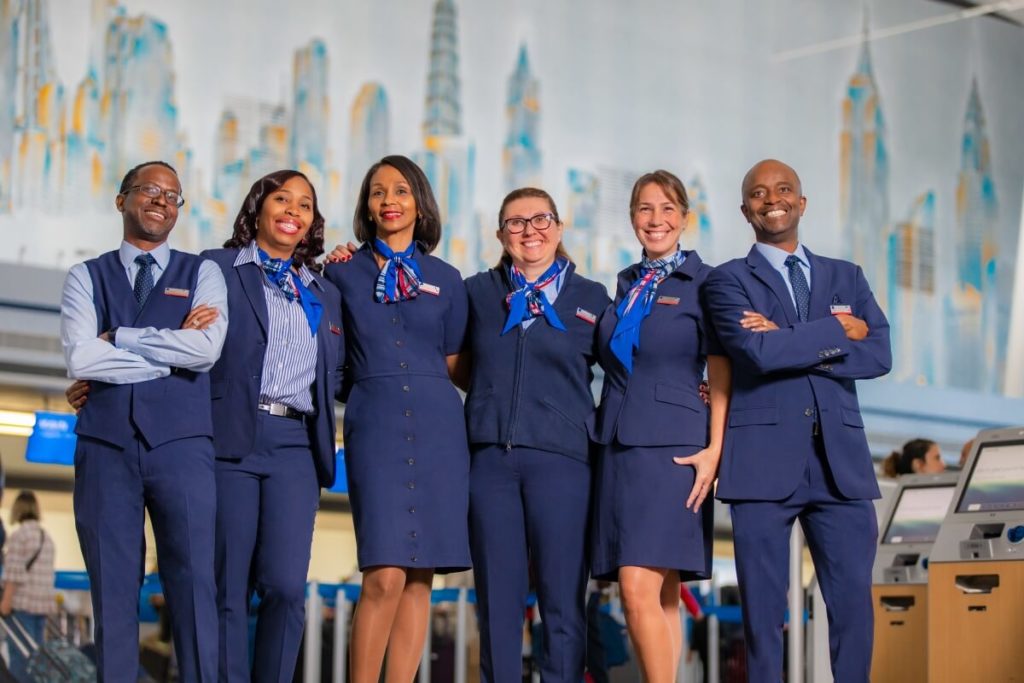How American Airlines is Transforming Its Culture by Transforming Delivery
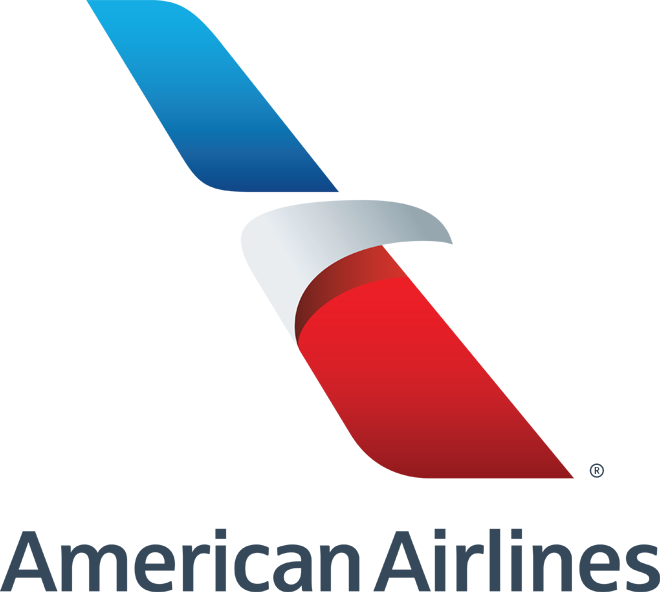
Why helping others win, listening and putting frontline employees in the position to truly solve customer problems has helped American Airlines hit new heights, innovate through COVID and transform their delivery and culture for the better
Article highlights:
Diagnose where your existing mindset and behaviours are limiting, no longer working, and must change to achieve the ambitious goals, such as those American Airlines believed in.
Why helping others win, thinking big, but starting small was the strategy for American Airlines to succeed, then scale their delivery and culture transformation.
Identify the metrics that evaluate what’s working or holding your teams back from unlocking your organization’s performance to innovate at scale.
Understand the difference between output and outcome based measure of success, including the steps for you to get started
How American Airlines not only innovated, but accelerated through the pandemic, including standing up 2100 touches kill take kiosks in 230 airports in just six weeks, increasing product release from aa.com to 2 releases a month to 40 in three weeks, 145% increase in boarding pass scans to start kiosk session, 57% increase in the use of prepaid bath functionality, and reduced average session time by 17 seconds.
How does a major airline stuck with languishing technology projects suddenly start making rapid improvements in product delivery, customer satisfaction, and team morale?
When initiatives are routinely failing to deliver significant value 12 months or more into development, leaders must boldly embrace change.

You have to have a culture that’s built on trust. You need leaders that are courageous and willing to step up and protect the team, but also have enough humility to stay out of their way.
In just a few short years, by opening up to new ways of working, American Airlines has begun experiencing breakthroughs in its culture and unprecedented success in achieving desired outcomes. As this transformation spreads throughout the organization, it’s becoming key to American’s post-COVID recovery.
Airlines aren’t usually known as technology-led companies. Like large organizations in any industry, many have struggled to innovate at the pace they desired. Inefficiencies have caused frustration across the board, from customers to teams to leadership. Until recently, American was no exception.
“We had grown IT to the point where it really wasn’t practical to add any more resources,” Customer Technology VP Steven Leist shared. “All we were doing was masking our inefficiencies in the way we delivered software. The reality was no one was satisfied: our team members were fatigued, and our leaders were upset. Our business partners complained about it taking 12-18 months to get projects done. And then when we delivered, it wasn’t what they wanted.”
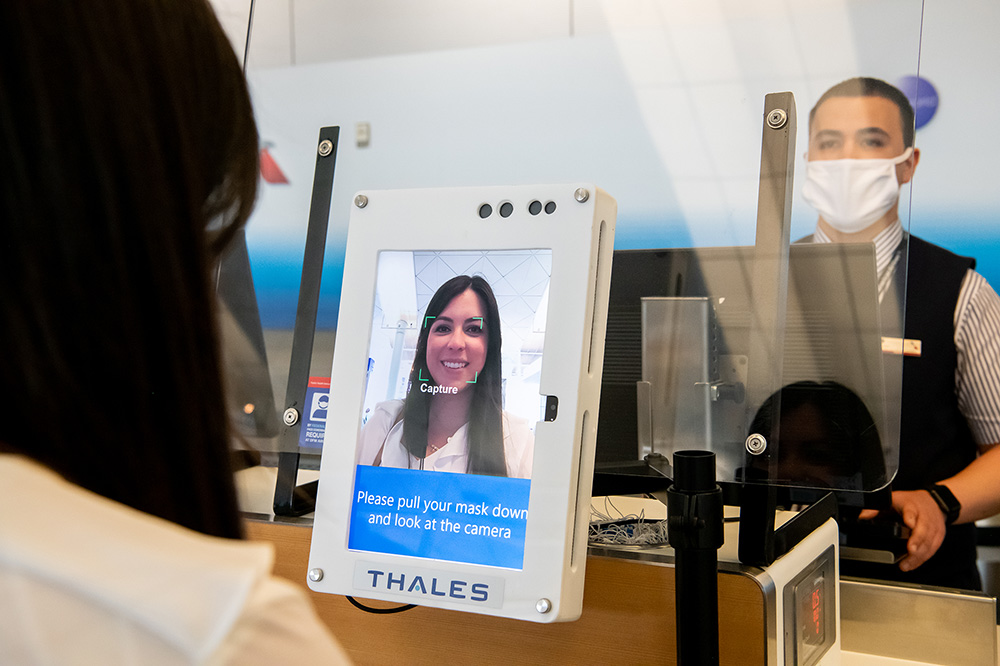

Transformation Catalyst, Jason Hobbs elaborated: “Wanting to be more agile and get value into customers’ hands was not a new concept for us. We’d been working on that for years—‘doing agile’ but not seeing the results we really wanted. We’d just ended up with super-long agile projects instead of super-long waterfall projects.”
Technology leaders had begun investigating new ways of working, and by 2018, there was a growing recognition that American needed to take a fundamentally different approach. At the helm, CEO Doug Parker had begun developing a new vision, inspired in part by books like Bob Chapman’s Everybody Matters and Simon Sinek’s Start With Why.
Leadership had adopted a strong focus on team member well-being, and that evolved into defining a fundamental company “Why” as “Caring for others on life’s journey.” Parker forged relationships with both authors and invited them to assist with the company’s transformation.
Chapman spoke to American’s officers, and Barry-Wehmiller’s training arm (now Chapman & Co.) began to guide them on being caring leaders. Sinek keynoted American’s annual leadership conference, becoming a strong advocate for the vision of a new American Airlines.
Key topics of these initial strategy sessions included:
- Shifting from a pure shareholder-focus to include the concerns of team members (especially those on the front lines) and ultimately to the customer, and
- Challenging the company to be more nimble, especially in its digital capabilities.
American’s technology organization had started an initiative called Delivery Transformation. This was intended to change the way software was delivered, focusing on DevOps and lean practices. The customer technology team knew the time was right to prioritize these concepts and begin to transform its culture.
How Has American Unlearned?


They also met acclaimed author and consultant Barry O’Reilly, who became an important ally for American’s technology leaders.
O’Reilly facilitated a strategy session with the entire 200-person Customer Technology leadership group. He demonstrated what it takes to lead these cultural shifts and helped them build the early stages of the change plan for the company.
Introducing O’Reilly’s signature concept of Unlearning proved a pivotal factor, helping people recognize that moments of comfort are not necessarily moments of inflection or change. Leaders began to see how experimenting with new personal and team behaviors could unlock new potential.
The group started to adopt a more product-centric approach, developing small, cross-functional teams responsible for making decisions. A crucial shift began from output-based metrics to outcome-focused ones for delivering software more frequently and tracking their business impact.
American also held its own mini DevOps Summit in early 2019 to draw inspiration from other top minds in business transformation, like Jez Humble and Ross Clanton. This event built on the company’s work with O’Reilly to accelerate its transformation and innovate at scale.
First Steps In Delivery Transformation
All of this learning, coaching, and training paved the way for facing hard truths and making bold changes. The old ways would have to go.
Previously a project would kick off with a set idea of what it would entail, which customers would want it, and how they would interact with it. American launched many initiatives this way but finished very few—many were floundering after 12 or even 18 months of investment.
The team started applying DevOps practices, lean principles, and another of O’Reilly’s core concepts, “Descaling Work,” to several of those projects as an experiment. They quickly started getting positive results, reducing production time and creating real, measurable outcomes.
One project, in particular, gained so much traction that it became the tip of the spear for company-wide transformation…
Pivotal Product: Customer Flight Choice
The concept was to offer customers new options in flight choice. From the beginning, it was intended to be a breakthrough effort, but it ended up being the project that struggled most of all.
Leist said, “We decided this was going to be a new effort for American—a value add to our customers. We were going to do this the new way, and break all the rules. But a good 12 months in, we were as frustrated with that project as any we’d ever done. Because we didn’t change our thought process. We didn’t think big and start small. We thought big and asked to do big faster. You can’t do that.”
The team had attempted to break the traditional patterns: new procedures like using microservices, changing their structure and size, adopting extreme programming practices like test-driven development and pairing, and targeting the cloud for delivery.
But they were still trying to deliver an entire, predetermined solution instead of providing a valuable customer outcome.
Hobbs reflected, “I think we learned at some point this is not about technology or deployment destinations. Those are tools we should exploit, but they’re not the answer to the problem. The answer was about getting really small—much smaller than we had ever imagined—starting with experiments and getting things out that don’t scale, before we invest in scaling them.”
The project hit rock bottom. There was frustration at all levels. No one was getting what they wanted and the team members were almost ready to quit. As a last-ditch effort, Joanne Montesano, the team’s Product Owner, and Tim Haagenson, the Squad Lead, had a memorable meeting with frustrated leaders.
“We were either going to trust and empower them, or they were going to walk out!” remembers Chris Isaac, Director of Loyalty Program Delivery. “That was the turning point. They said, ‘Give us a couple of days to work on a scaled down plan that we can execute on, and let’s meet again.’ We agreed, Joanne and Tim came back with a real MVP, and from that day on, the momentum took over. That’s when we really started to understand the concept of starting small.”
Hobbs added, “It wasn’t just the successful creation of this tiny ‘Let’s get something small into customers’ hands and learn’ MVP that changed everything. It was a shift in TRUST.”
Unlearning had begun, from the members of the team, to the leaders involved. And the results were phenomenal.
Within three weeks, the team had a working system to learn from—manual and limited in scope, but providing real value and real insights.
After 12 months of stagnating efforts with no material prototype produced, suddenly there was a product, and excitement spread like wildfire. Of all American’s teams, this was the first to build a true incremental test-and-learn methodology.


How the Customer Flight Choice Team Did It
The initial test involved manually texting customers to:
1) Let them know their flight might be overbooked, and
2) Invite them to call if they were interested in changing their reservation.
The first question the team wanted to answer was, “Would people want this at all?” They surmised that if customers were willing to go to the trouble to make a phone call, that would provide a strong indicator of interest.
With this approach, not only were they able to determine that the interest did indeed exist, but they got an immediate surprise when they discovered who responded. The first call received was from a customer segment they hadn’t even considered, so right away they started learning and changing their assumptions.
The team kept testing labor-intensive approaches that didn’t scale. For example, the product lead would log in manually to issue a voucher. Processes were automated only after being proven out manually.
Suddenly, the type of work the team was embarking on was new, and each “next problem solved” was impactful. They learned and adapted with every release or experiment and started to address problems like:
“How can we test different messaging to encourage more customers to respond?” and
“What types of travelers are more likely to accept this kind of an offer?”
And they were able to answer these questions and validate solutions long before building a full, robust system. Their experiments and learnings were now guiding their work. The team and the business got to see value flowing and new information arriving continuously as the product grew, and trust was at an all-time high.
The power of trying smaller steps more frequently is faster iteration. You ship more and learn faster. And when you make smaller mistakes, they’re recoverable, and you can respond faster. But for a lot of large companies it’s hard to recognise the benefit of descaling work until they experience it.
Spreading the Good News
The flight choice product became the poster child for Delivery Transformation and built credibility and enthusiasm for the approach within the business.
Hobbs shared, “This product really revealed that this is about way more than team structure and cloud infrastructure. It’s about getting amazing information from customers and telling the team, ‘Okay, go!’ And the team itself, with information from the real world, would steer the process.”
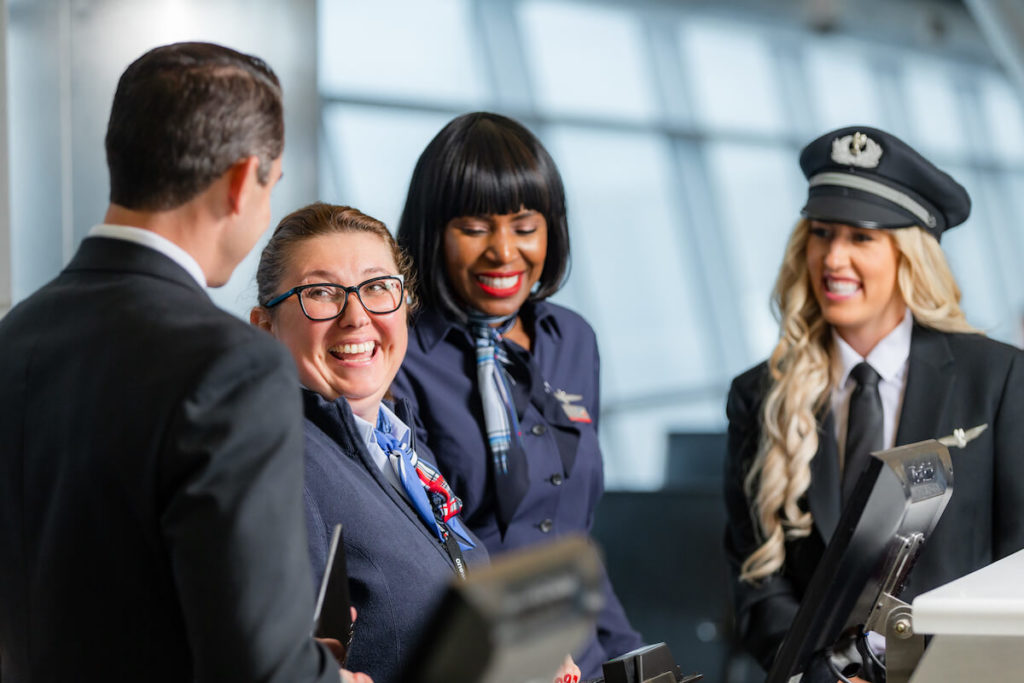

One of the group’s key technical leaders moved onto Hobbs’ team in an evangelist role to help other teams achieve real transformation.
Building Momentum
As other teams started seeing the fast results of the Customer Flight Choice effort, they also started engaging with the Delivery Transformation approach. This provided a crucial breakthrough that came just in time to help the company weather the pandemic.
Here are just a few examples of other teams that have achieved previously inconceivable results.
AA.Com Goes Light Speed
The AA.com team reimagined its entire delivery process, making a decisive shift away from large-scale releases. It had achieved the capability to deliver those releases every two weeks and had reached the limit of production with that model.
Catching wind of the new successes of the DevOps-focused initiatives, the website team set an audacious new goal: “When a developer submits a pull request, their code is in production within one hour. Every step of the process is automated.”
No one would have dared imagine this before, but they achieved it in just a few months.
Contactless Kiosks
The start of the pandemic precipitated an urgent need for contactless airport kiosks. Applying Delivery Transformation principles, the team was able to stand up 2100 kiosks in 230 airports in just six weeks. Like the AA.com team, it also improved software delivery to provide updates in near real-time.


Unexpected Transformations
Additionally, teams that no one expected to embrace innovation surprised everyone with their creativity and proactive decisions to adopt the new approaches.
The team handling the SAAS platform for American’s loyalty program, which wields a large, monolithic architecture, went from deploying once a quarter to four times a month. They’re also able to push releases during the day without incident instead of having to pull all-nighters.
The gate agent team also transformed their work. This technology is a decades-old system slated for replacement. However, the team was inspired to take on Delivery Transformation to better steward their product—even though no one asked them to. As a result, they cut their lead times in half and 8X’d their release frequency. They also cut defects to an all-time low and completely automated their releases. All of this was accomplished with one quarter of the former team size, working on a ‘legacy’ system.
Teams like these have more autonomy and ownership of their products. Even though making these shifts presents many challenges, it inevitably brings the teams closer together. It also allows them to improve their product much faster. Their lives improve as well, because releasing change becomes far less stressful. And they know that when problems emerge, they can respond swiftly and confidently.
Guiding Principles of Delivery Transformation
To support the cultural changes needed for high-performance product development, American has adopted a number of key changes. Here are some of the highlights…
Use Transformation Metrics to Direct Help Where it’s Needed.
American’s technology leaders realized they needed to change not only what metrics they used, but how they used them.
Key outcome metrics include deployment cycle time, change failure rate, and mean time between incidentals—proven indicators of successful digital transformation.
Effectively using these metrics has required a mindset shift about their purpose. In the past, metrics were seen as the basis for performance assessment. The intention has now become to use them to recognize obstacles so team members can be supported in overcoming them.
Combine Celebration with Inspiration
A “Storytime” Slack channel lets teams share their projects and successes company-wide. This platform provides a space for celebration and supports a virtuous cycle of inspiration.
Hobbs shared, “Those stories are really powerful. It’s where teams are inspired and where magic is happening. People want to tell great stories, and they pick up on other stories and get ideas. There are great surprises happening there.”
The channel has also made it easier for leaders to discover and capture successes. It’s how Leist found out about the gate software team’s efforts, giving him the chance to single them out for celebration.
Focus on Morale by Treating People as Humans
Gauging morale is not about adding surveys; it’s about finding ways to connect. Leaders are encouraged to share gratitude moments and celebrations with their teams, ask people sincerely how they’re doing, and put out feelers and listen.
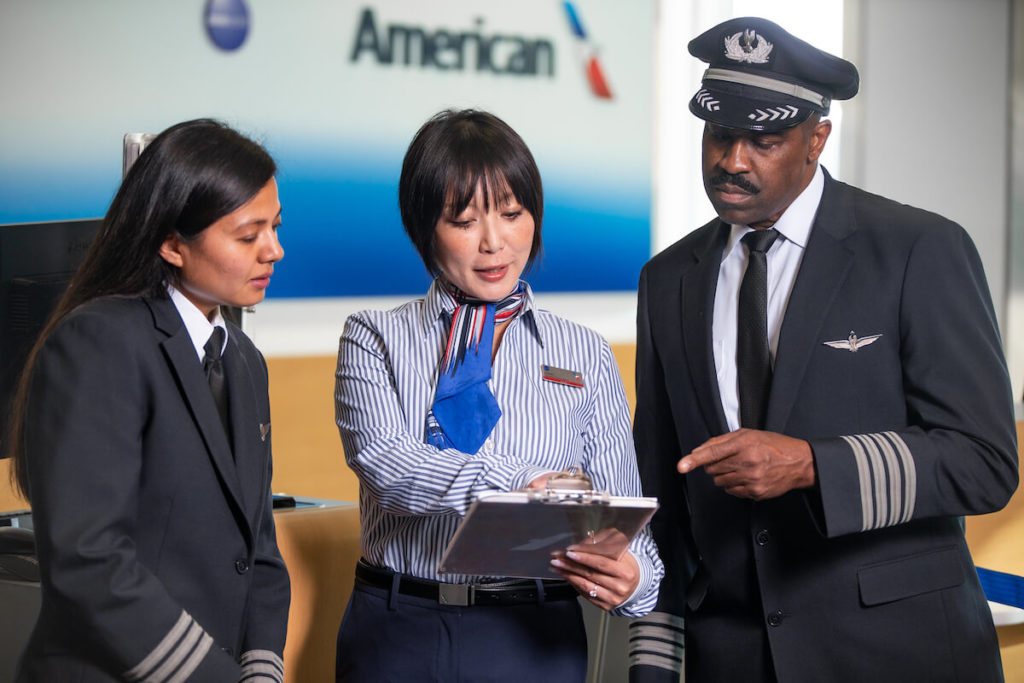

Even in the midst of the pandemic when life has been more stressful for people, work-related sentiment remained positive.
Support Not Only Small Releases but Small Markets
Starting small allowed the customer flight choice team to make rapid progress. “That really was an unlearning moment for us because historically there was a big clip of requirements,” Leist shared. “You had to deliver a new product for all passengers in all markets, at least domestically. And now all of a sudden we’re saying, ‘Well how about we just do it for single passengers flying out of Dallas?’”
The kiosk team also found ways to go radically small-scale, for example by pushing an update to a single unit downstairs from their office and watching how customers interacted with it. This approach soon led to their ability to push instant changes to all their kiosks, even 3rd-party “CUSS” units serving multiple airlines (down from 45 days).
One of the mistakes a lot of companies make is having one department decide to transform and go it alone. But they never get a systematic company-wide change. You have to bring others on that journey. It may feel too difficult for some, so it’s important to find the right partner to take the first, small, uncertain steps. When you learn your way through together, you build teamship, momentum, and the relationship to tackle the increasingly audacious challenges ahead.
Get Buy-in From Business and Finance
In the past, the idea of releasing experimental updates to a small set of kiosks in a single airport was untenable for business leaders. However, once they saw the results of the earlier projects, they no longer needed convincing. They became advocates for Delivery Transformation.
The finance team has also played a pivotal role. Recognizing the constraints of funding traditional initiatives, American’s 2020 funding process changed to a completely product-focused model. It was a radical shift, but the team took the risk and brought in support to strategize with product teams.
This crucial move gave teams the flexibility to do what makes sense for their product and tie it back to the outcomes and goals they’ve developed. It has also empowered them to test ideas brought by senior leaders, rather than feeling compelled to run with them.
For true transformation, the entire company needs to get behind the efforts. At American, there is clear support at every level, from the CEO and throughout the company.
Rethink Management Culture
Leaders have had to make a conscious effort to let go of control and empower teams to do their best work, focused on outcomes rather than merely outputs.
Leist described the mindset shift: “The leaders got out of the way. We were able to get enough trust and have enough tangible results with these early wins, that leaders were saying, ‘Okay, as hard as it is for me, I’m going to let go.’ And when we do that, the team loves it. And they continually surprise us with their amazing delivery in the way they attack these problems.”
Reaping the Rewards
In addition to the extraordinary results already mentioned, American started to realize a variety of more global benefits:
- In 2020, just a few years after American first attended the DevOps Summit, CIO Maya Leibman and Managing Director of Technology Transformation Ross Clanton gave the keynote and told the company’s transformation story.
- A popular travel blogger noticed the rapid changes the AA.com team was producing and posted that American must have a “team of elves” working their magic behind the scenes.
- The company has been attracting a diversity of top talent, paving the way for even more robust and inclusive innovations.
- Senior leaders are all citing Delivery Transformation as key to their post-pandemic plans to help the company not only recover, but flourish.
- Focus is increasingly shifting from tactical problems (e.g. how to deliver an item on time) to more interesting challenges (e.g. how to improve feedback mechanisms, invest in team members’ growth, or hire for the future).
